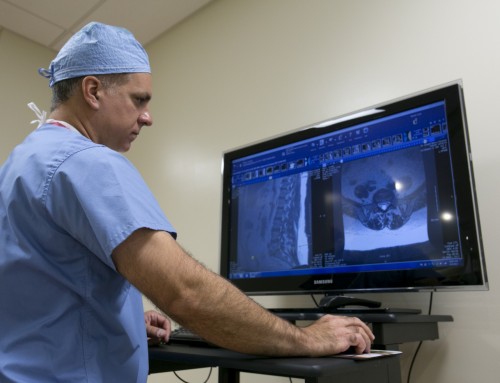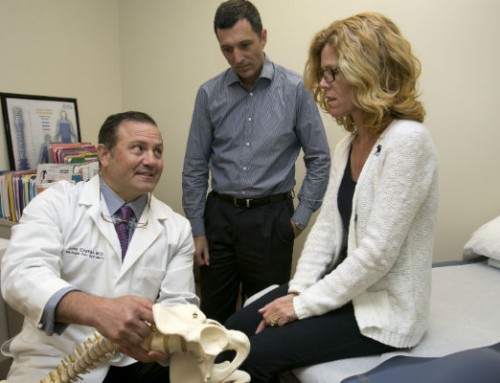How to Start Traveling Again After Pain Treatment
When you’ve been living with chronic pain, many aspects of your life — things that you once enjoyed — wind up being put on hold. One of those activities? Travel. For many chronic pain patients just the idea of traveling, hours spent sitting on planes or in the car, handling luggage and walking around sightseeing, is enough to cause anxiety.
Your pain treatment has addressed the pain, and you’re ready to get back on the road. However, after dealing with pain in your everyday life for so long you may worry it will come back to impact your vacation. You may think that feeling good is “too good to be true,” and hold back when you used to dive in.
That feeling is normal – just don’t let it stop you from traveling and enjoying your life. As any Pain Relief Specialist will tell you, the whole point of finding pain relief is to help you get back to living the life you love. Ease back into travel slowly so you can keep in touch with your body and adjust as necessary. Instead of jumping back into a cross-country road trip, consider testing the waters with a long weekend away.
If you’re ready to find the best ways to find relief for your pain and start enjoying life again, contact the Heilman Center for an appointment with a Pain Relief Specialist. Call (734) 796-7555 today.
Once you feel comfortable, try a week. Then, consider more demanding types of travel, like on planes and trains, where you’ll likely be cramped and sitting still for a long time. Once you’re confident the pain is under control while traveling for a week, work your way up to more adventurous trips.
When planning a vacation, talk to your Pain Relief Specialist about things to consider before booking and leaving for the trip. With some smart travel planning and a few adjustments to your itineraries, you can avoid pain flare-ups and quench your thirst for adventure — or just a change of scenery.
Plan Strategically
Air travel tends to be the trickiest to navigate while managing pain. To make your flight more pleasant, plan accordingly, and follow these tips:
- Book your flights strategically. Try to book flights that allow you to remain on a schedule as close to normal as possible, and require as little time in a small airline seat as possible. It’s worth spending a little more money on direct flights that only take a few hours rather than less expensive flights with long layovers and more airtime. However, if taking an exceptionally long flight, you might want to find routes with short layovers that will give you a chance to stretch your legs for a bit. If you’re unsure about which to book, talk with your Pain Relief Specialist for advice.
- Choose the right seats. Again, it’s worth paying a little more for seats that are more comfortable. Consider springing for business or first-class tickets, or at the very least, seats with extra legroom or on a bulkhead. Consider the airline itself, too, as budget airlines tend to be more cramped and seats less comfortable.
- Take advantage of airport services. Before your flight, call the airline to discuss your condition and your needs. While some airlines aren’t always known for excellent customer service, by discussing accommodations ahead of time, you may be able to secure extra assistance with your bags, get permission to board early, and get recommendations for how to best de-plane upon arrival. Consider talking with your Pain Relief Specialist ahead of time and getting a letter outlining your needs to improve the chances that the airline will work with you. At the very least, don’t be afraid to use the services available to you, including shuttles around the airport and wheelchair assistance. American Airlines, for example, has a dedicated website and phone number for traveler assistance.
- Bring relief aids. Talk to your Pain Relief Specialist about an over-the-counter pain reliever before your flight to reduce discomfort. Bring a travel pillow or back pillow for support, hot and cold packs (a doctor’s note will help you get through security) and anything else that will help you feel better.
Pack light. Only pack what you can comfortably carry and lift. If you are going on an extended trip, check your bags, or consider shipping your belongings right to your hotel ahead of time. Wear comfortable, supportive shoes and be sure to bring a warm layer to stay comfortable in cooler plane temperatures. If you’re arriving at your hotel before check-in, most will allow you to store your bags. Institutions like museums and aquariums may also be happy to store a day pack for you while you visit to ease your load for a couple of hours.
Staying on Track
- When traveling, it’s common to get completely off schedule — after all, you’re on vacation, so why be tied to the clock? However, when you have chronic pain, consistent self-care can be an important part of your treatment. It’s best to try to retain as much normalcy as possible and not overdo it. This includes getting plenty of sleep, drinking plenty of water, eating as close to your normal diet as possible, and not overdoing it when it comes to activities and sightseeing.
- As you plan your days, resist the temptation to over-plan. Each day of your trip, choose one activity that is a “must do.” These are the things that would be disappointing if you didn’t do them, such as visiting a famous museum. Consider anything else you do to be a bonus.
- Consider the distances between attractions or activities, and how you will travel between them. Even though things might appear close together on a map — and walking 10 blocks might not be an issue for some people — it could cause you discomfort. Have a plan for getting around before you go and don’t be afraid to take a taxi or public transportation for even short distances if necessary.
- Travel light. Carry only the necessities in a small bag or backpack and be strategic in your souvenir shopping. Lugging parcels around all day is enough to give anyone an aching back. As mentioned earlier, take advantage of bag checks and lockers in cultural institutions to avoid lugging things around on your back or shoulders.
Traveling can bring great joy to your life, even if it’s just a quick weekend away near home. You don’t have to let your fear of pain stop you. With a few adjustments, and a thoughtfully developed plan between you and your Pain Relief Specialist, you can get back out there and start exploring again.
If you want to return to traveling, but chronic pain makes that difficult, contact The Heilman Center for Pain and Spine Care and schedule a consultation with a Pain Relief Specialist. Visiting our pain treatment center could have you visiting those bucket-list places after all.






